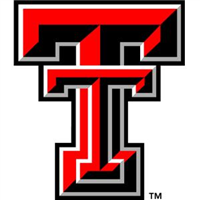What do they do?
Photograph people, landscapes, merchandise, or other subjects. May use lighting equipment to enhance a subject's appearance. May use editing software to produce finished images and prints. Includes commercial and industrial photographers, scientific photographers, and photojournalists.
Also known as:
Advertising Photographer, Commercial Photographer, Graduation Photographer, Industrial Photographer, News Photographer, Newspaper Photographer, Newspaper Photojournalist, Photo Editor, Photographer, Photojournalist, Portrait Photographer, Sports Photographer, Studio Photographer
-
4.8%
Change
Ranks #47 in job growth rate370Job Openings
Ranks #13 in net job growth
-
Ohio University-Main Campus
Athens, OH
-
Texas Tech University
Lubbock, TX
-
Rensselaer Polytechnic Institute
Troy, NY
-
University of Georgia
Athens, GA
-
The University of Texas at Dallas
Richardson, TX
Looking for colleges that offer a specific major? Use the College Match Tool to find your best-matched schools and discover your estimated Net Price!
- Doctorate or Professional Degree (1%)
- Master's degree (8%)
- Bachelor's degree (43%)
- Associate's degree (12%)
- Some college, no degree (22%)
- High school diploma equivalent (12%)
- Less than high school diploma (2%)
Most Popular Majors that prepare Photographers
-
#1
-
Degrees Granted
17
-
Female Students
9
-
Male Students
8
-
Median Starting Salary
$39,600
-
-
#2
-
Degrees Granted
1
-
Female Students
1
-
Male Students
0
-
Median Starting Salary
$36,700
-
-
#3
-
Degrees Granted
1
-
Female Students
0
-
Male Students
1
-
Median Starting Salary
$39,600
-
People in this career often have these skills:
- Active Listening - Giving full attention to what other people are saying, taking time to understand the points being made, asking questions as appropriate, and not interrupting at inappropriate times.
- Speaking - Talking to others to convey information effectively.
People in this career often know a lot about:
- Customer and Personal Service - Knowledge of principles and processes for providing customer and personal services. This includes customer needs assessment, meeting quality standards for services, and evaluation of customer satisfaction.
- Sales and Marketing - Knowledge of principles and methods for showing, promoting, and selling products or services. This includes marketing strategy and tactics, product demonstration, sales techniques, and sales control systems.
- Computers and Electronics - Knowledge of circuit boards, processors, chips, electronic equipment, and computer hardware and software, including applications and programming.
- Administration and Management - Knowledge of business and management principles involved in strategic planning, resource allocation, human resources modeling, leadership technique, production methods, and coordination of people and resources.
- English Language - Knowledge of the structure and content of the English language including the meaning and spelling of words, rules of composition, and grammar.
- Communications and Media - Knowledge of media production, communication, and dissemination techniques and methods. This includes alternative ways to inform and entertain via written, oral, and visual media.
- Fine Arts - Knowledge of the theory and techniques required to compose, produce, and perform works of music, dance, visual arts, drama, and sculpture.
- Production and Processing - Knowledge of raw materials, production processes, quality control, costs, and other techniques for maximizing the effective manufacture and distribution of goods.
- Administrative - Knowledge of administrative and office procedures and systems such as word processing, managing files and records, stenography and transcription, designing forms, and workplace terminology.
- Psychology - Knowledge of human behavior and performance; individual differences in ability, personality, and interests; learning and motivation; psychological research methods; and the assessment and treatment of behavioral and affective disorders.
People in this career often have talent in:
- Near Vision - The ability to see details at close range (within a few feet of the observer).
- Oral Expression - The ability to communicate information and ideas in speaking so others will understand.
- Originality - The ability to come up with unusual or clever ideas about a given topic or situation, or to develop creative ways to solve a problem.
- Visualization - The ability to imagine how something will look after it is moved around or when its parts are moved or rearranged.
- Far Vision - The ability to see details at a distance.
- Oral Comprehension - The ability to listen to and understand information and ideas presented through spoken words and sentences.
- Visual Color Discrimination - The ability to match or detect differences between colors, including shades of color and brightness.
- Problem Sensitivity - The ability to tell when something is wrong or is likely to go wrong. It does not involve solving the problem, only recognizing that there is a problem.
People in this career often do these activities:
- Set up still or video cameras or related equipment.
- Determine technical requirements of productions or projects.
- Convert data among multiple digital or analog formats.
- Operate still or video cameras or related equipment.
- Create computer-generated graphics or animation.
- Apply finishes to artwork, crafts, or displays.
- Maintain records, documents, or other files.
- Maintain inventories of materials, equipment, or products.
- Review art or design materials.
- Confer with clients to determine needs.
- Maintain recording or broadcasting equipment.
- Select materials or props.
- Coordinate activities of production personnel.
- Research new technologies.
- Construct distinctive physical objects for artistic, functional, or commercial purposes.
- Write informational material.
- Arrange artwork, products, or props.
- Obtain copyrights or other legal permissions.
This page includes data from:

 Occupation statistics: USDOL U.S. Bureau of Labor Statistics Occupational Employment Statistics
Occupation statistics: USDOL U.S. Bureau of Labor Statistics Occupational Employment Statistics









